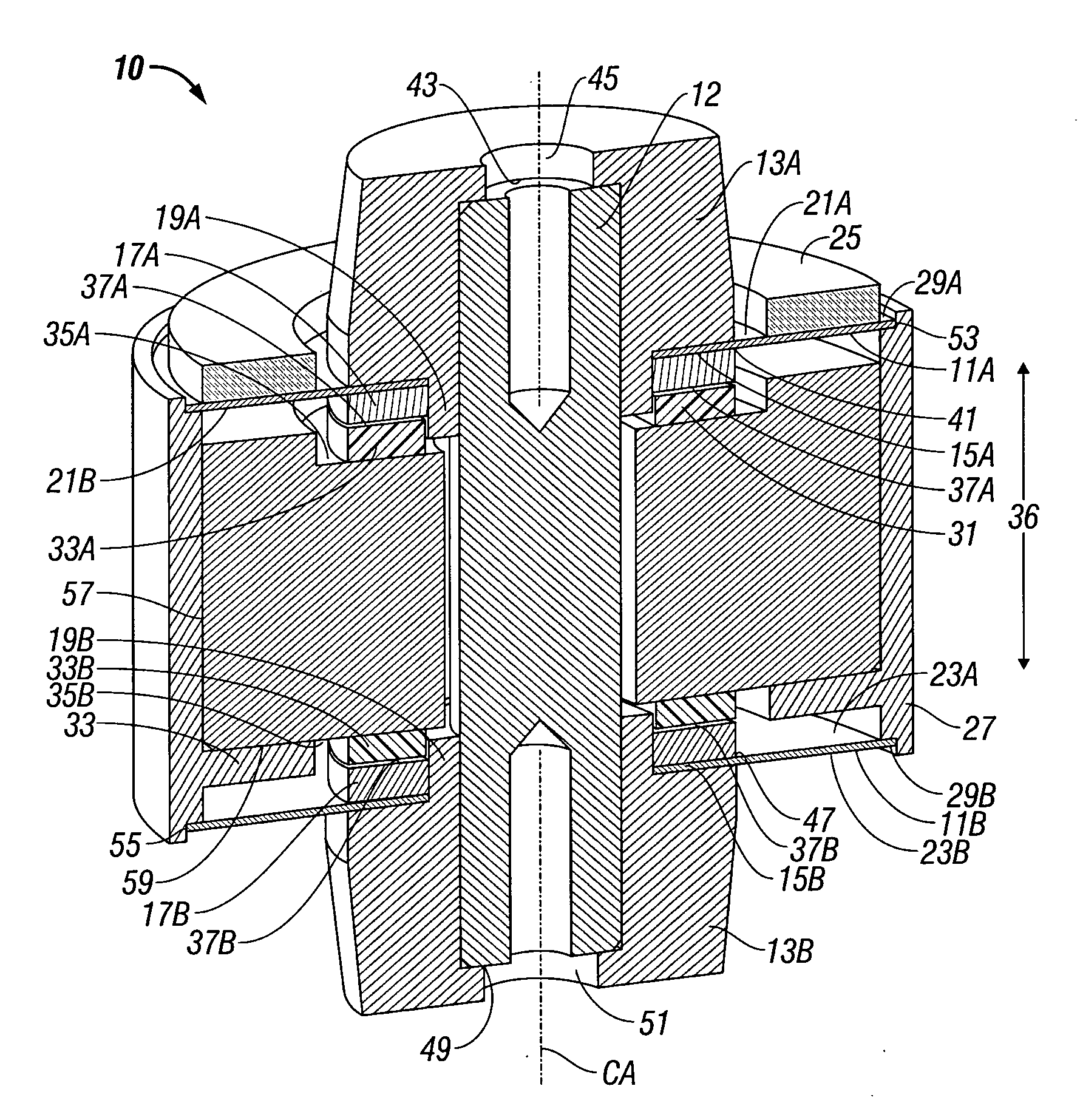Flexural disc fiber optic sensor and method of forming same
a fiber optic sensor and flexural disc technology, applied in the field of fiber optic sensors, can solve the problems of poor strain measurement sensitivity and device more susceptible to high-g shock damag
- Summary
- Abstract
- Description
- Claims
- Application Information
AI Technical Summary
Benefits of technology
Problems solved by technology
Method used
Image
Examples
Embodiment Construction
[0018]Turning now to FIG. 1, a fiber optic sensor 10 according to the present invention includes a top flexural disc 11A and a bottom flexural disc 11B that are rigidly attached to a central support structure (e.g., the center post 12 and corresponding central support members13A, 13B). In the preferred embodiment, the radially inner portion 15A of the top flexural disc 11A is permanently affixed between the central support member 13A and a backing disc 17A by welding, adhesive material, or other suitable means (for example, by welding along the interface 41 through the radially inner portion 15A of the top flexural disc 11A to the central support member 13A). The backing disc 17A interfaces to an annular flange portion 19A of the central support member 13A. The central support member 13A is rigidly attached to the center post 12 by welding, adhesive material, or other suitable means (for example, by welding along an interface 43 that is exposed by a cutout 45 in the top wall of the ...
PUM
| Property | Measurement | Unit |
|---|---|---|
| temperature | aaaaa | aaaaa |
| temperature | aaaaa | aaaaa |
| heat-deflection temperature | aaaaa | aaaaa |
Abstract
Description
Claims
Application Information
 Login to view more
Login to view more - R&D Engineer
- R&D Manager
- IP Professional
- Industry Leading Data Capabilities
- Powerful AI technology
- Patent DNA Extraction
Browse by: Latest US Patents, China's latest patents, Technical Efficacy Thesaurus, Application Domain, Technology Topic.
© 2024 PatSnap. All rights reserved.Legal|Privacy policy|Modern Slavery Act Transparency Statement|Sitemap


